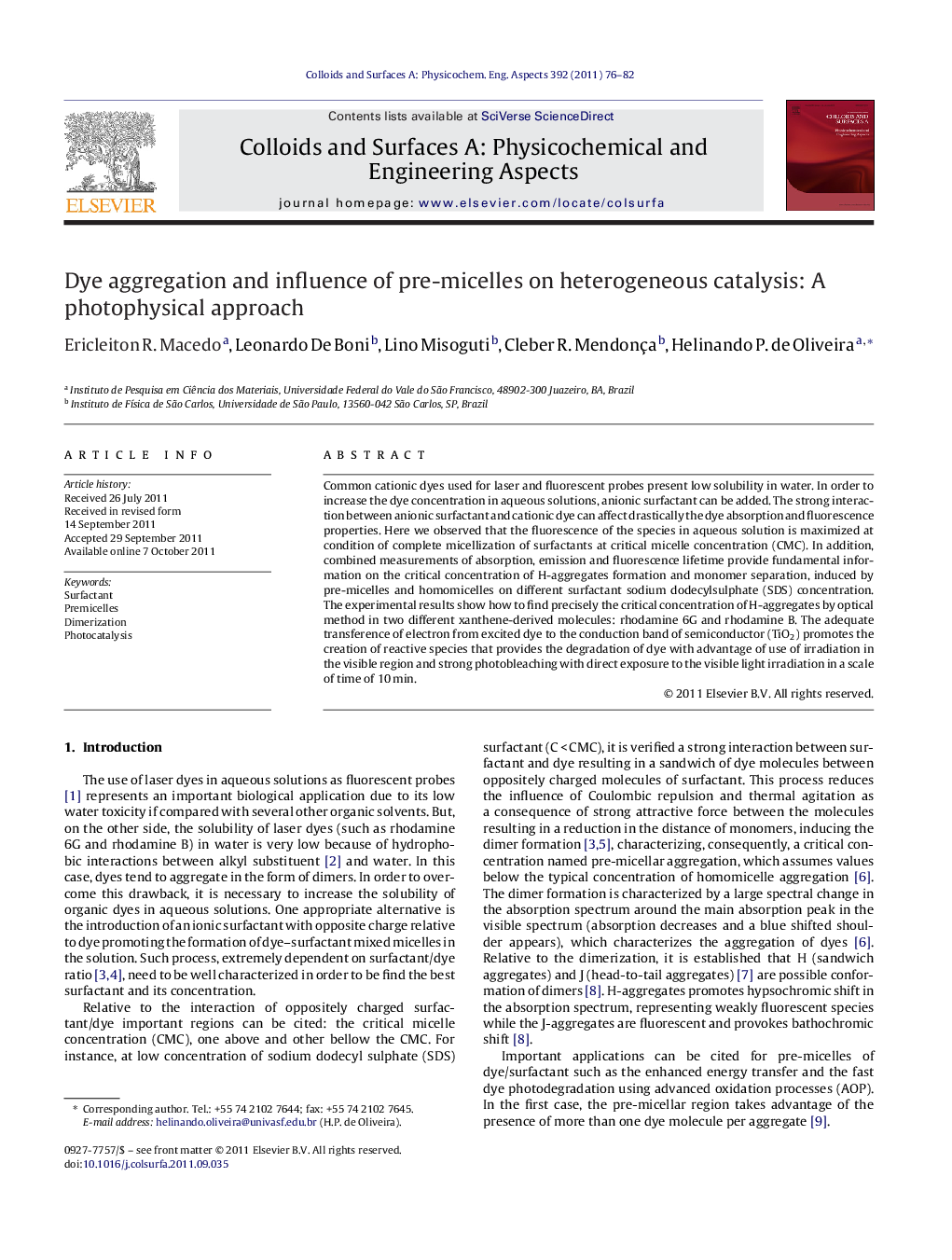| Article ID | Journal | Published Year | Pages | File Type |
|---|---|---|---|---|
| 594376 | Colloids and Surfaces A: Physicochemical and Engineering Aspects | 2011 | 7 Pages |
Common cationic dyes used for laser and fluorescent probes present low solubility in water. In order to increase the dye concentration in aqueous solutions, anionic surfactant can be added. The strong interaction between anionic surfactant and cationic dye can affect drastically the dye absorption and fluorescence properties. Here we observed that the fluorescence of the species in aqueous solution is maximized at condition of complete micellization of surfactants at critical micelle concentration (CMC). In addition, combined measurements of absorption, emission and fluorescence lifetime provide fundamental information on the critical concentration of H-aggregates formation and monomer separation, induced by pre-micelles and homomicelles on different surfactant sodium dodecylsulphate (SDS) concentration. The experimental results show how to find precisely the critical concentration of H-aggregates by optical method in two different xanthene-derived molecules: rhodamine 6G and rhodamine B. The adequate transference of electron from excited dye to the conduction band of semiconductor (TiO2) promotes the creation of reactive species that provides the degradation of dye with advantage of use of irradiation in the visible region and strong photobleaching with direct exposure to the visible light irradiation in a scale of time of 10 min.
Graphical abstractThe premicelles of SDS/rhodamine B minimize the fluorescence lifetime inducing the dimerization of rhodamine B and promoting the optimized condition for fast photodegradation in the presence of titanium dioxide particles.Figure optionsDownload full-size imageDownload as PowerPoint slideHighlights► Premicelles of anionic surfactant induce the fast photodegradation of cationic dye. ► The fluorescence lifetime of dye is reduced in the presence of premicelles. ► The energy transfer from dye aggregate to semiconductor enhances the photobleaching of dye.
